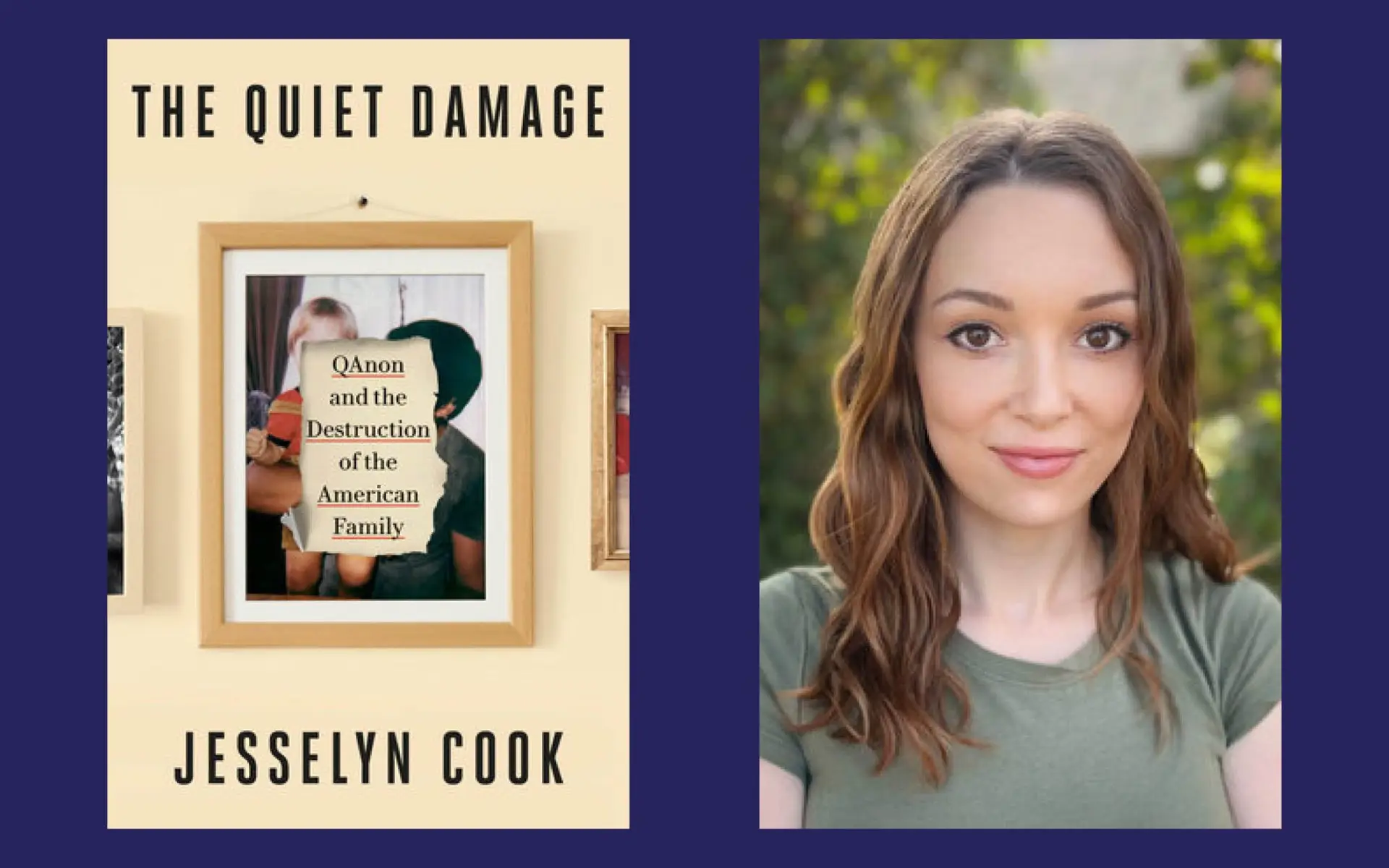Jesselyn Cook’s The Quiet Damage: QAnon and the Destruction of the American Family is a heartbreaking account of relationships buckled and broken under the weight of conspiracy beliefs. It follows husbands, wives, and children who come to the bitter realization that the person they knew might be gone, lost inside rabbit holes created by QAnon, the anti-vaxx movement, and any number of online tribes active today. Reflecting on the end product of a mother’s gravitation to QAnon, Cook writes:
“The deranged, unrecognizable person she’d become was a product of her own choices, and that person didn’t want to be saved.” (92)
Faced with realities like this, “mourning the living” defines too many families shattered by conspiracy belief. (176)
Most of the stories in The Quiet Damage did not start out this way. The individuals featured are well-educated, belying the trope about conspiracies residing within the minds of the ignorant. More than a few are ethical idealists. They are sociable, feeling a need for both connections with other people and the need to belong to something greater.
Each of the people featured in The Quiet Damage share a tragic, inciting incident. Emily’s life was thrown into disarray by the death of her husband. Doris was misdiagnosed with pancreatic cancer. Alice was a self-described “New Age hippie” and Bernie Sanders supporter soured on American politics. (35) Kendra was the victim of systematic racism. The 2020 pandemic took many of these pre-existing problems and reinforced them through the social isolation and misinformation campaigns that defined our COVID new norm. (63-64)
Cook illustrates the inflection point where beliefs and experiences curdle into personal pathologies. External belligerence becomes a way to channel “internal anger and sadness.” (23) Conspiracy belief subsequently serves as “an IV drip of victim mentality rhetoric” because it offers simple answers for disillusionment and grievance. (19) The targets of conspiracies generally tend to be traditional institutions: mainstream media, the medical community, and government. Regarding conspiracy communities, Cook notes “Their appeal, in turn, generally hinged upon their status as the dissenters rather than the legitimacy of their dissent, while their professional reprimands, malpractice complaints, and fact-checked Facebook posts were touted as badges of honor.” (48)
READ: New Book Offers Insights Into Why the United States Is a Country ‘Marinated in Conspiracy Theory’
In this context, new conspiracy communities displace existing family structures and form “a groupthink echo chamber.” (214) They have a perverse utility. Cook describes the attraction for one QAnon adherent: “it was a Band-Aid on a wound that had been festering for more than two decades. Worse, it was a drug numbing her pain while satisfying her human desire to hurt others as she had been hurt, and she was addicted.” (173)
Making this situation even more complex is the fact that the cult of conspiracy is vindicated to a degree by some kernels of truth. Big Pharma did mislead the country about the effects of opioids. (41) The George W. Bush administration did manipulate and misrepresent intelligence data during the Global War on Terror. An ongoing record of bad faith and official bad acts help sustain flights of fancy.
The Quiet Damage does offer a few glimmers of hope from its grim narrative. In a call back to the 1970s when many families struggled with members under the influence of cults, finding a way to deprogram the afflicted is key. Solutions vary. Alice, the disaffected Bernie Sanders supporter, benefitted from an intervention by her father, who understood how to communicate with his daughter. In other cases, mental health professionals offer remedies such as “Socratic questioning,” which encourages engagement instead of open confrontation. (157) The goal is to create enough space for cognitive dissonance to impact conspiracy belief and allow the healing process to begin.
As the author notes, this will be a long-term exercise fraught with opportunities for backsliding. The need for a supportive community that underpins many conspiracy believers requires constant patience, persistence, and cultivation. It can be fickle, fragile, and exhausting.
Although The Quiet Damage offers cautionary stories about a small group of families, it has a far greater value demonstrating both the challenges faced by America today and the long-term solutions we may encounter in the next few years. Healing is our best option, and it will no doubt be an exhausting necessity, perhaps one of the most important moments in our generation. Time will tell.







